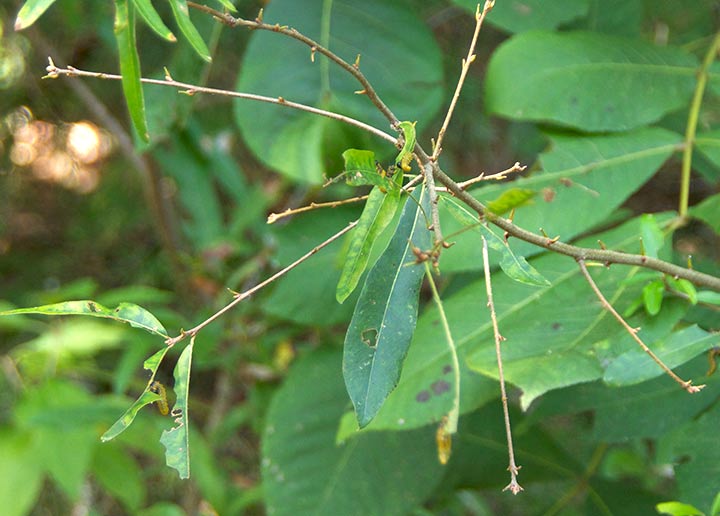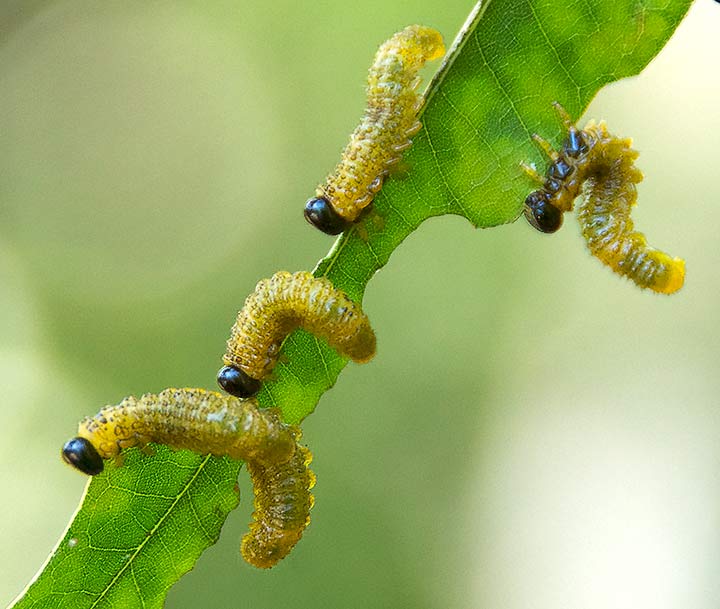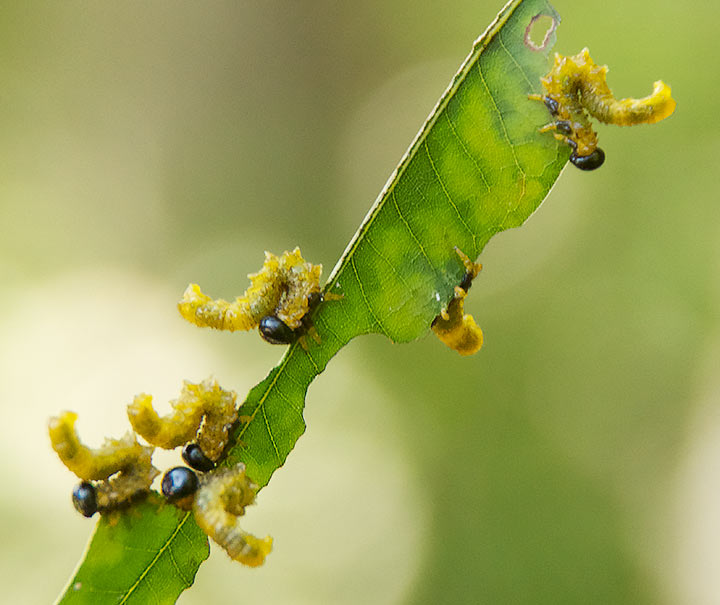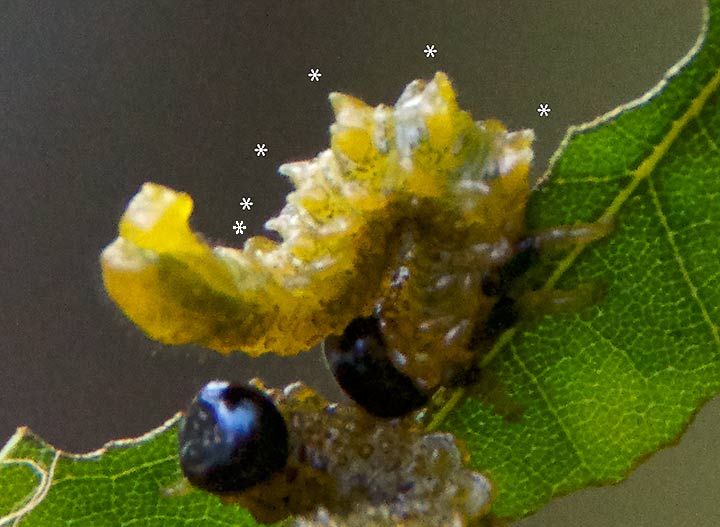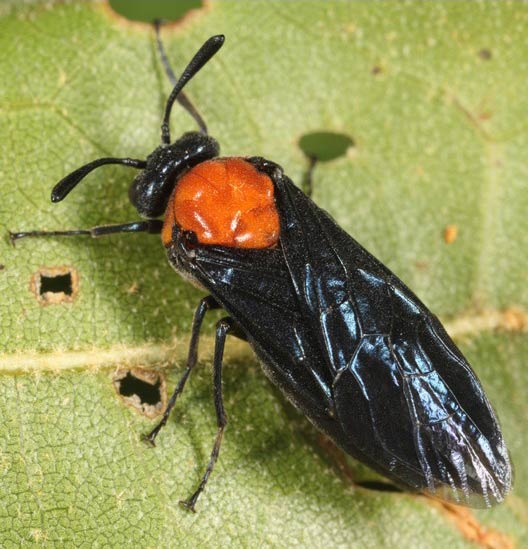Late last Fall, I noticed that one of the Willow Oak (Quercus phellos) saplings in the back yard had been nearly stripped of its leaves. On closer inspection, I discovered that is was being attacked by a group of insect larvae.
They were handsome little creatures, with shiny black heads and black upper sections to their legs.
When I tapped on a branch, they all curled up their bodies in a defensive reaction. I don’t know how this was supposed to intimidate predators. It could be a startle response or some fancied resemblance to a snake.
At first I thought they were caterpillars of some sort, but a closer examination revealed their true identity. Caterpillars are the larvae of moths or butterflies. As explained in my last post on Datana, caterpillars have three pairs of true legs and almost never have more than four pairs of prolegs. These larvae had too many prolegs to be caterpillars. In the photograph above, the true legs are clearly seen because of their black upper segments. I have labeled the six pairs of prolegs on this larva with an asterisk. Since these larvae were feeding on Willow Oak, and many larvae feed specifically on one species of plant, this helped in their identification. They are larvae of the Willow Oak Sawfly (Arge quidia).
This is a picture of an adult Willow Oak Sawfly. Sawflies are in suborder Symphyta of the insect order Hymenoptera, which also includes bees and wasps. They are similar in appearance to wasps, but do not have the narrow “wasp waist”, and they do not sting. The female’s ovipositor is long and serrated. It is used to “saw” into leaves to deposit eggs. I have never seen the adult of this species, the photograph above was taken by Tom Murray, and I copied it from the internet (http://bugguide.net/user/view/1368).

